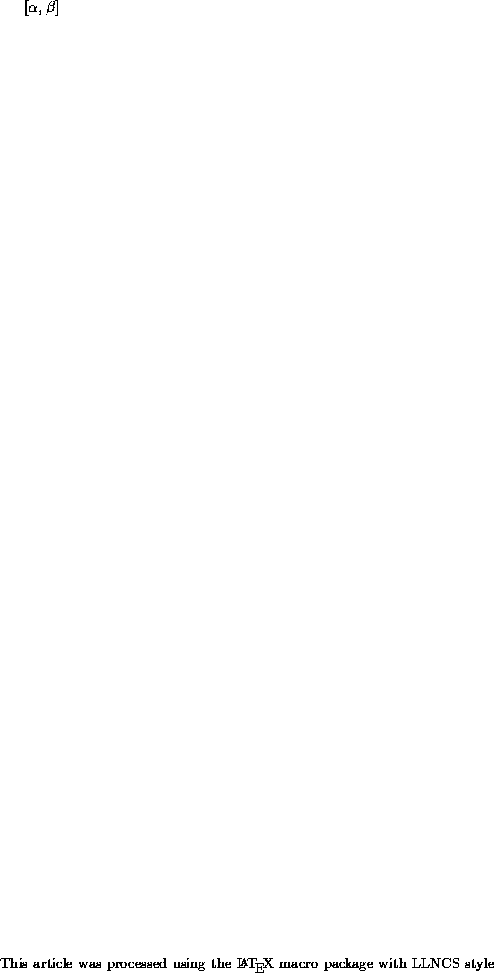 -by-
-by- Hermitian matrix
Hermitian matrix  , which has
, which has  real
eigenvalues
real
eigenvalues  .
When computing eigenvalues, the following choices are possible:
.
When computing eigenvalues, the following choices are possible:
We first consider the  -by-
-by- Hermitian matrix
Hermitian matrix  , which has
, which has  real
eigenvalues
real
eigenvalues  .
When computing eigenvalues, the following choices are possible:
.
When computing eigenvalues, the following choices are possible:
 for some specified set of subscripts
for some specified set of subscripts  ,
including the special cases of the largest
,
including the special cases of the largest  eigenvalues
eigenvalues  through
through
 , and the smallest
, and the smallest  eigenvalues
eigenvalues  through
through  .
Again, the desired accuracy may be specified.
.
Again, the desired accuracy may be specified.
 . Again, the desired accuracy may be specified.
. Again, the desired accuracy may be specified.
 .
.
The spectral information one can request from a
singular value decomposition is similar, except that there are left and right
singular vectors and singular subspaces, corresponding to eigenvectors and
invariant subspaces. Common requests might include the numerical rank,
the null space, and the range space.
In order to compute these the user must supply a tolerance  ,
which will determine which singular values are considered to be
nonzero or zero. Methods can differ greatly depending on whether there
is a gap between the singular values larger than
,
which will determine which singular values are considered to be
nonzero or zero. Methods can differ greatly depending on whether there
is a gap between the singular values larger than  and those smaller,
and whether the user wants an approximate or precise answer.
and those smaller,
and whether the user wants an approximate or precise answer.
Self-adjoint matrix pencils
 , where
, where  and
and  are
are
 -by-
-by- and Hermitian, and can be simultaneously diagonalized by a
congruence, are quite similar.
The case
and Hermitian, and can be simultaneously diagonalized by a
congruence, are quite similar.
The case  corresponds to the standard Hermitian eigenproblem
just discussed.
corresponds to the standard Hermitian eigenproblem
just discussed.
 has
has  real eigenvalues which we denote
real eigenvalues which we denote
 . If
. If
 is nonsingular,
is nonsingular,  .
The user may request similar subsets of eigenvalues as described above,
as well as right and/or left eigenvectors.
If the pencil is non-singular, the user may request
right or left deflating subspaces, which are generalizations of
invariant subspaces [37].
If
.
The user may request similar subsets of eigenvalues as described above,
as well as right and/or left eigenvectors.
If the pencil is non-singular, the user may request
right or left deflating subspaces, which are generalizations of
invariant subspaces [37].
If  is a singular pencil, the
common null-space of
is a singular pencil, the
common null-space of  and
and  can also be computed,
as well as the deflating subspaces of the regular part.
can also be computed,
as well as the deflating subspaces of the regular part.
Just as the SVD of A is closely related to the eigendecomposition of
 ,
the QSVD corresponds to the matrix pencil
,
the QSVD corresponds to the matrix pencil  .
The case
.
The case  corresponds to the usual SVD.
corresponds to the usual SVD.
Table 2 spells out the possible decompositions which
display all the information the user could want. We use terminology
which will apply to the non-Hermitian problem too. ``Schur'' form
refers to the simplest decomposition possible with complex unitary
transformations. (Real orthogonal matrices are also possible,
if the original data is real; we leave out the real case for ease of
exposition.) ``Jordan-Schur'' form refers to the most detailed
decomposition possible with unitary transformations; this form
reduces the matrix or matrices to ``staircase'' form [41],
wherein all the sizes of Jordan blocks are immediately available,
and some more detailed invariant
(or deflating [37] or reducing [42])
subspaces are computed. ``Jordan'' form, which typically requires
non-unitary transformations and so can be very ill-conditioned to
compute, is the most detailed decomposition. Jordan form is usually
called Weierstrass form for regular pencils, and Kronecker form
for singular pencils.  and
and  matrices in the table are unitary,
matrices in the table are unitary,
 matrices are general nonsingular,
matrices are general nonsingular,  is real and diagonal,
is real and diagonal,
 is real, diagonal, and nonnegative,
is real, diagonal, and nonnegative,  matrices are
upper triangular, and
matrices are
upper triangular, and  matrices are in
upper triangular staircase form.
matrices are in
upper triangular staircase form.
The decompositions may also be written with  and
and  isolated on
the left-hand-side, for example
isolated on
the left-hand-side, for example  instead of
instead of
 . The reason for writing these decompositions
as they are shown, is that they can be partial decompositions,
if only
. The reason for writing these decompositions
as they are shown, is that they can be partial decompositions,
if only  of the eigenvalues or singular values are of interest
to the user. In this case the central matrices (
of the eigenvalues or singular values are of interest
to the user. In this case the central matrices ( ,
,  ,
,

 ,
,  ,
, 
 ,
,  ,
,  , and
, and  ) will be
) will be  -by-
-by- ,
and the outer matrices (
,
and the outer matrices ( ,
,  and
and  ) will be
) will be  -by-
-by- .
.

Table 2: The Possible ``Eigendecompositions'' of Self-adjoint Eigenproblems
In addition to these decompositions, the user may request condition numbers for any of the computed quantities (eigenvalues, means of eigenvalue clusters, eigenvectors, invariant/deflating/reducing subspaces) [13][38][27]. Given computed values for eigenvalues, eigenvectors, and/or subspaces, the user may also request an a posteriori error bound based on a computed residual.